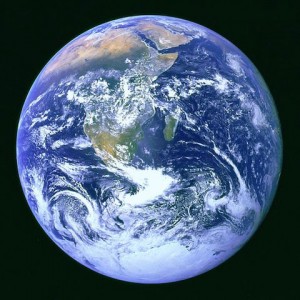“For God so loved the world that he gave his only Son, that whoever believes in him should not perish but have eternal life. For God sent the Son into the world, not to condemn the world, but that the world might be saved through him.” (John 3:16-17)
“I am the light of the world; he who follows me will not walk in darkness, but will have the light of life.” (John 8:12)
+ + + + + + + + +

What is the world? This in my opinion seems to be the question that tends to go unmentioned in many Christian circles when speaking about evangelization, Catholic lay spirituality, and normative Christian life.
Just as Thomas Merton bespoke the integral truth of man as a social being — “No man is an island” — so too we must not forget that Christian discipleship and human relationships do not exist in vacuums or theory but in the concrete reality of the present moment and place. Indeed this is the main thrust of the Second Vatican Council’s proclamation of its relationship to the modern world:
The joys and the hopes, the griefs and the anxieties of the men of this age, especially those who are poor or in any way afflicted, these are the joys and hopes, the griefs and anxieties of the followers of Christ (Gaudium et Spes #1).
In the language of Catholic social teaching, the Church is proclaiming the virtue of solidarity with the world.
So what is the world? In the Biblical tradition this refers to the kosmos, the ordered reality that emanates from God and in which it has its being. In this sense the world is not mere material that is floating in nothingness but exists at every moment in and through its Creator-God. From this principal fact it can be discerned that the world is, first and foremost, good—regardless of the ways in which it has been distorted and malformed. It is not intrinsically evil but is the result of God’s continual “Let there be.” It is that which Aslan, an icon of God, sings into existence in C. S. Lewis’ The Chronicles of Narnia.
This is the world about which John the Baptist proclaims Jesus has come to take away its sins. It is that in which God has assumed flesh and blood and where he has ordained each of us to be born and transformed.
For these reasons and more, the world is not something from which to flee but to run to, as a father runs into a burning house to save his children. The calling of the consecrated to cut ties with the world is a particular calling within the Church for some, but it is not the normative, ordinary calling of the Christian. Even so, the vows of the consecrated are not in spite of the world but in a very real way for the sake of it. The calling, the vocation, of the Christian is to bring a heart after God’s own heart into the burning, collapsing, messy building of the world.
To reiterate what was previously spoken, the vocation of the baptized disciple of Christ is to practice solidarity with the people of the world. This is how holiness occurs for the secular-minded, baptized followers of Christ. They are to tear down the barriers of “us” and “them” that would stop the un-churched and non-religious from ever stepping foot into a tabernacle of tabernacles. They are to be in the world but not of the world, acting as leaven to fill society with the fruits of the Spirit — justice, mercy, charity, peace, and truth.
In order to do this, Christ’s lay faithful need not only a Spirit-filled heart but a keen mind well-versed and familiar with what the world ought to look like. This does not mean that there is only one uniform way for the world to truly thrive but that certain truths must be upheld for man to build a just, merciful, and loving society. Such truths include the dignity and promotion of the human person, the pursuit of the common good, the centrality of the family, and the like. These truths are to be taken into society, into the world, and spark a fire that consumes the hearts and minds of men with caritas in veritate, charity in truth.
The world was never meant to stay as the world, i.e., that which stands between God and man. It was never intended to be the instrument of the Tempter. Instead, by God’s salvific power the world has become, as a theological mentor and good friend of mine has once said, the theater in which the drama of salvation unfolds and is realized.
It is the vocation of the baptized Christian to pursue solidarity with the injured, both physically and spiritually, and to offer them the merciful and passionate face of Christ, just as we need that same Christ-gaze. It is the vocation of the baptized Christian to eliminate structures of sin and false justice that would further oppress the oppressed and dehumanize the downtrodden and confused.
We must seek the common good in all of its intricate facets and designs. We must propose the Bride of Christ’s vision of and for the world as contained in the Church’s rich reflections on society at large. In short, we must all fervently strive toward realizing the Kingdom of God where “Mercy and truth have met each other: justice and peace have kissed” (Psalm 85:10).
So, what is the world? Perhaps the better question is “Whose is the world?” The world is God’s, and it is about time we start acting that way.







6 thoughts on “What is the World?”
Pingback: New Post on Ignitum Today | The Cajun Catholic
And as we explore other WORLDS let us remember that another mankind may have
already passed through our plight eons ago – and wouldn’t that upset the apple cart.
Since the author referred to Thomas Merton, he could at least have cited the other kind of world described by Merton in New Seeds of Contemplation, in the chapter entitled the Body of Broken Bones, the world that our Lord would not pray for: ” What is the “world” that Christ would not pray for, and of which He said that His disciples were in it but not of it? The world is the unquiet city of those who live for themselves and are therefore divided against one another in a struggle that cannot end, for it will go on eternally in hell. It is the city of those who are fighting for possession of limited things and for the monopoly of goods and pleasures that cannot be shared by all. There is only one true flight from the world; it is not an escape from conflict, anguish and suffering, but the flight from disunity and separation, to unity and peace in the love of other men.”
Good article….but I think it was John Donne who said “no man is an island”. Maybe Merton was quoting him.
Pingback: MONDAY EDITION - BigPulpit.com
Pingback: What is the World? | Catholic Springtime